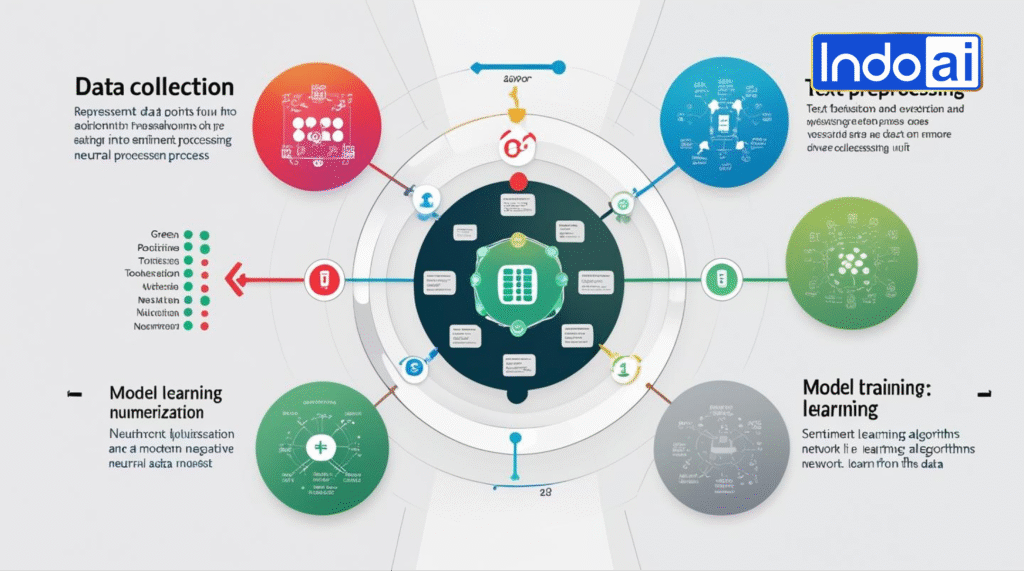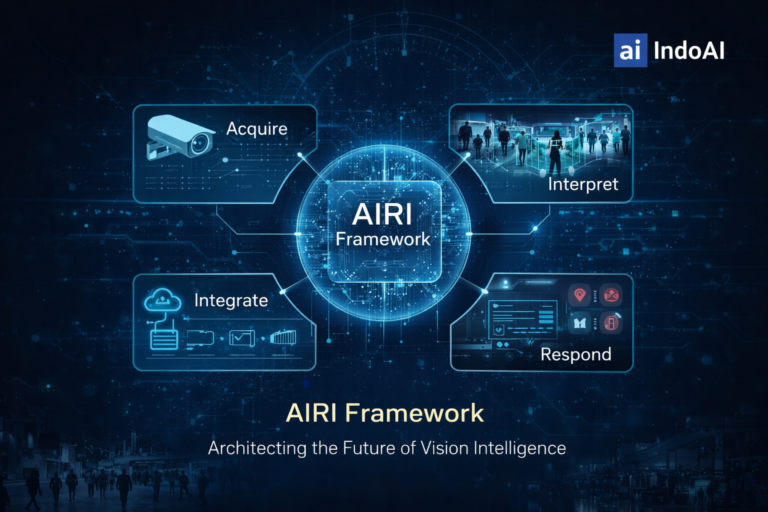Sentiment analysis is the task of identifying and extracting the opinions, emotions, and attitudes expressed in natural language texts. It is also known as opinion mining or emotion AI. Sentiment analysis can help businesses and organizations understand how their customers, users, or stakeholders feel about their products, services, or policies. It can also help individuals gain insights into their own or others’ moods, preferences, and motivations.
Sentiment analysis is a challenging and fascinating problem that involves various aspects of natural language processing (NLP), such as syntax, semantics, pragmatics, and discourse. It also requires a lot of domain knowledge, cultural awareness, and common sense. In this article, we will explore how artificial intelligence (AI) can help us perform sentiment analysis, what are the main methods and techniques used, and what are the current challenges and limitations.
Methods and Techniques for Sentiment Analysis

There are many ways to approach sentiment analysis, depending on the type and complexity of the data, the level and granularity of the analysis, and the desired outcome and application. However, to avoid any confusion here we will focus on the two broad categories: lexicon-based and machine learning-based.
1. Lexicon-based Methods
Lexicon-based methods rely on predefined dictionaries or lists of words and phrases that are associated with certain sentiments or emotions. For example, a simple lexicon might contain words like “happy”, “sad”, “angry”, “love”, “hate”, etc., along with their polarity (positive or negative) and intensity (strong or weak). A lexicon-based method would then assign a sentiment score to a text by counting or aggregating the scores of the words or phrases that appear in it.
Lexicon-based methods are easy to implement and do not require any training data. However, they have several drawbacks, such as:
– They cannot capture the context and nuances of natural language, such as sarcasm, irony, negation, modality, etc. For example, a sentence like “I love this product so much that I want to throw it away” would be classified as positive by a simple lexicon-based method, even though it is clearly sarcastic and negative.
– They are domain-dependent and language-specific, meaning that they might not work well across different domains or languages. For example, a word like “sick” might have a positive connotation in slang (e.g., “That’s sick!”) but a negative connotation in health (e.g., “I feel sick”).
– They are prone to human bias and subjectivity, meaning that different people might have different opinions or interpretations of the same word or phrase. For example, a word like “interesting” might be positive for some people but neutral or negative for others.
2.Machine Learning-based Methods
Machine learning-based methods use algorithms that learn from data to perform sentiment analysis. They typically involve three steps: data collection and preprocessing, model training and evaluation, and model deployment and inference.
– Data collection and preprocessing: This step involves gathering a large amount of text data that is relevant to the domain and language of interest, and labeling it with sentiment labels (e.g., positive, negative, neutral) or scores (e.g., 1 to 5 stars). This data is then cleaned, normalized, tokenized, and vectorized to make it suitable for machine learning algorithms.
– Model training and evaluation: This step involves choosing a machine learning algorithm (e.g., logistic regression, support vector machine, neural network) and feeding it with the preprocessed data to learn the patterns and features that are associated with different sentiments. The algorithm is then evaluated on a separate set of data (test set) to measure its accuracy, precision, recall, F1-score, etc.
– Model deployment and inference: This step involves deploying the trained model to a production environment where it can receive new texts as input and output sentiment labels or scores as output. The model can also be updated or retrained periodically to improve its performance or adapt to new data.
Machine learning-based methods can overcome some of the limitations of lexicon-based methods by capturing the context and nuances of natural language, being more domain-independent and language-agnostic, and being more objective and consistent. However, they also have some challenges, such as:
– They require a lot of labeled data to train effectively
– They can be computationally expensive
– They can be affected by noise or bias in the data
– They can be hard to interpret or explain
Challenges and Limitations of Sentiment Analysis
Sentiment analysis is not a solved problem yet. There are still many challenges and limitations that need to be addressed by researchers and practitioners. Some of them are:
– Sentiment is subjective and complex: Different people might have different opinions or emotions about the same thing
– Sentiment is dynamic and evolving: People’s opinions or emotions might change over time or according to different situations
– Sentiment is multimodal and expressive: People might express their opinions or emotions through different modes or channels, such as text, speech, image, video, emoji, etc.
– Sentiment is influenced by many factors: People’s opinions or emotions might depend on many factors, such as their personality, mood, culture, background, etc.
To overcome these challenges and limitations, sentiment analysis needs to incorporate more advanced techniques and methods, such as:
– Deep learning and neural networks: These are powerful machine learning techniques that can learn from complex and high-dimensional data, such as text, speech, image, video, etc. They can also capture the context and semantics of natural language better than traditional methods.
– Transfer learning and domain adaptation: These are techniques that can leverage the knowledge learned from one domain or task to another domain or task. They can help reduce the need for labeled data and improve the generalization and robustness of sentiment analysis models.
– Explainable AI and interpretability: These are techniques that can provide explanations or justifications for the decisions or outputs of sentiment analysis models. They can help increase the trust and transparency of sentiment analysis applications.
Sentiment analysis is a valuable and exciting application of AI that can help us understand how people feel about various topics, products, services, or events. It can also help us improve our products, services, or policies based on the feedback and opinions of our customers, users, or stakeholders. However, sentiment analysis is not an easy task. It involves many challenges and limitations that need to be addressed by using more advanced and sophisticated techniques and methods. In this article, we have discussed how AI can help us perform sentiment analysis, what are the main methods and techniques used, and what are the current challenges and limitations.
Read more at
[1] What is Sentiment Analysis? – GeeksforGeeks ¹
[2] Sentiment analysis – Wikipedia ²
[3] What is sentiment analysis? | Microsoft Dynamics 365 ³
[4] Introduction (Chapter 1) – Sentiment Analysis ⁴
[5] Sentiment Analysis Methods in 2023: Overview, Pros & Cons – AIMultiple ⁵
[6] Modern Methods for Sentiment Analysis – Medium ⁶
[7] Types of Sentiment Analysis Methodologies | Repustate ⁷
[8] 8 Applications of Sentiment Analysis – MonkeyLearn ⁸
[9] What is Sentiment Analysis: Concepts, Use Cases & Applications [GUIDE] ⁹
[10] Top 5 Sentiment Analysis Challenges and Solutions in 2023 – AIMultiple [^10^]
[11] Sentiment Analysis Challenges: Everything You Need to Know – Repustate ¹¹
[12] Sentiment Analysis challenges and ways to overcome them. – Medium ¹²
[13] Sentiment Analysis Process: A Flexible 6 Step Framework – Hotjar ¹³
[14] Sentiment Analysis Charts | Charts | ChartExpo ¹⁴
[15] Data Flow Diagram for Sentiment Analysis of Students Reviews … – Creately ¹⁵
[16] Step-by-Step Sentiment Analysis Process – Repustate ¹⁶
Source:
(1) What is Sentiment Analysis? – GeeksforGeeks.
(2) Sentiment analysis – Wikipedia.
(3) What is sentiment analysis? | Microsoft Dynamics 365.
(4) Introduction (Chapter 1) – Sentiment Analysis.
(5) Sentiment Analysis Methods in 2023: Overview, Pros & Cons – AIMultiple.
(6) Modern Methods for Sentiment Analysis – Medium.
(7) Types of Sentiment Analysis Methodologies | Repustate.
(8) 8 Applications of Sentiment Analysis – MonkeyLearn.
(9) What is Sentiment Analysis: Concepts, Use Cases & Applications [GUIDE].
(10) Top 5 Sentiment Analysis Challenges and Solutions in 2023 – AIMultiple.
(11) Sentiment Analysis Challenges: Everything You Need to Know – Repustate.
(12) Sentiment Analysis challenges and ways to overcome them.
(13) Sentiment Analysis Process: A Flexible 6 Step Framework – Hotjar.
(14) Sentiment Analysis Charts | Charts | ChartExpo.
(15) Data Flow Diagram for Sentiment Analysis of Students Reviews … – Creately.
(16) Step-by-Step Sentiment Analysis Process – Repustate.


